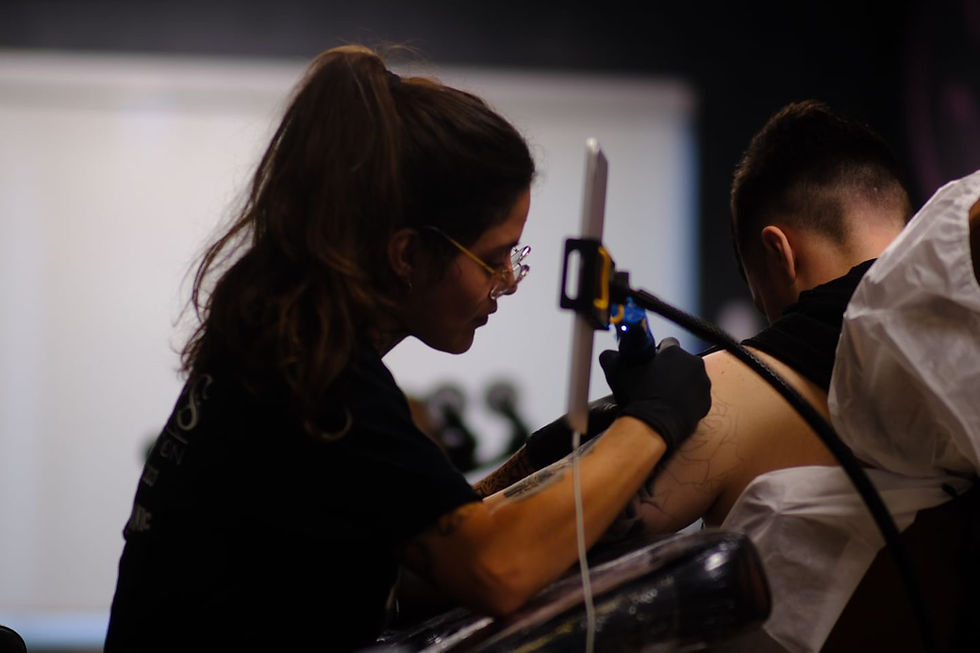The Art of Realism Tattoos: Turning Skin into a Canvas of Detail
- Vilacha Tattoo
- 27 oct
- 2 Min. de lectura
Realism tattoos are one of the most striking forms of modern tattoo art. They go beyond simple designs or symbolic imagery and aim to recreate life itself with breathtaking precision. Every shadow, highlight, and line works together to give depth and dimension, transforming the skin into a living canvas. At Vilacha Tattoo, realism is more than a style—it’s a discipline that merges patience, technical skill, and deep artistic vision.
Creating a realism tattoo begins with observation. The artist studies real-life references or photographs to understand every subtle detail, from the texture of skin and light reflection to the exact tones that will make the image look alive. This preparation phase is crucial, as it sets the foundation for how the tattoo will translate onto the body. Once the design is finalized, the process becomes a meticulous performance of layering, shading, and blending.
Unlike traditional tattoos that rely on thick outlines, realism tattoos use gradual transitions between tones. This creates a soft, natural effect that mimics real imagery. The smallest mistake can change the entire perception of the piece, which is why this style demands absolute focus and experience. Each stroke of the needle must follow the structure of the image perfectly to capture light and shadow realistically.
For many clients, realism tattoos carry deep emotional meaning. They often represent loved ones, personal stories, or images that hold timeless significance. A well-done realism tattoo not only resembles a photograph but also preserves emotion in ink.
The artistry of realism tattooing lies in precision and patience. It is not rushed. It evolves layer by layer until the final image seems to breathe from the skin itself. If you are looking to bring your vision to life through an artist who understands realism at its core, book your session NOW and experience how reality can become art.










Comentarios